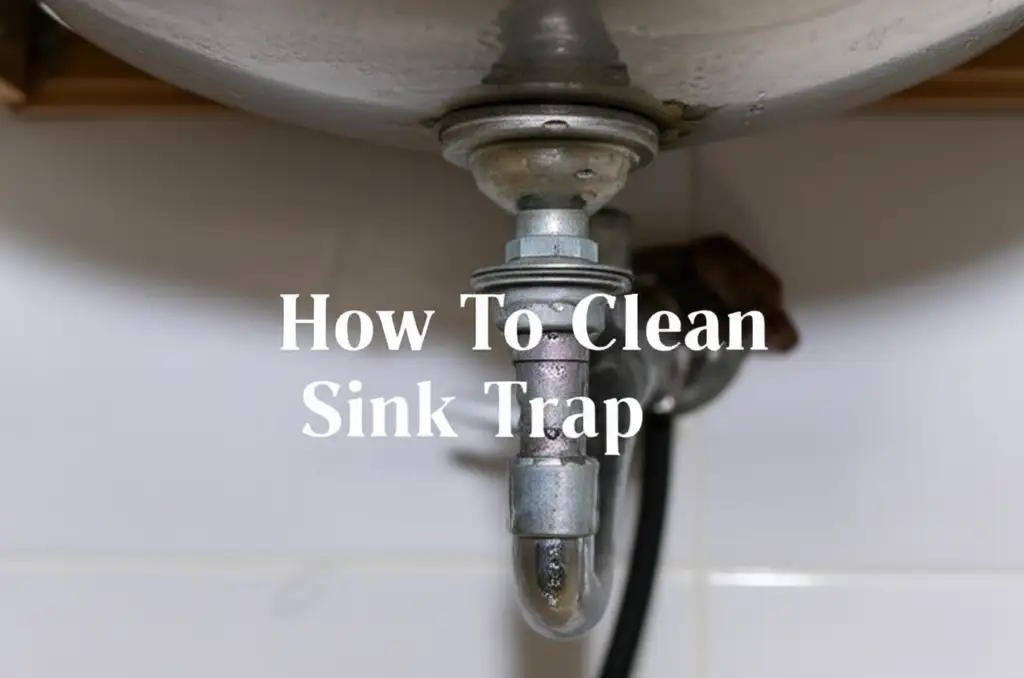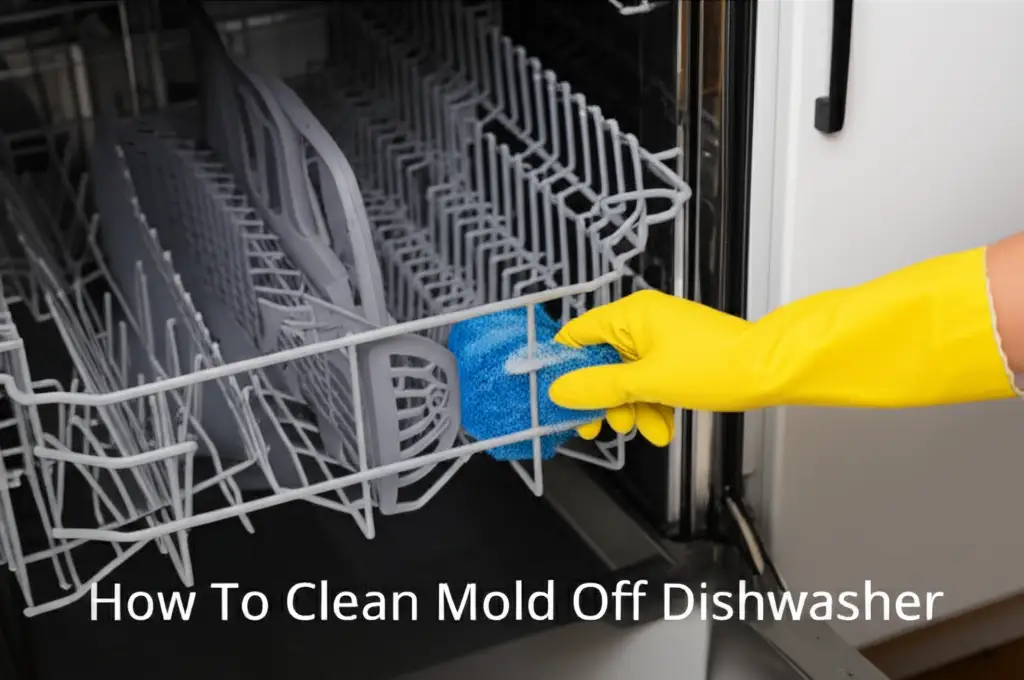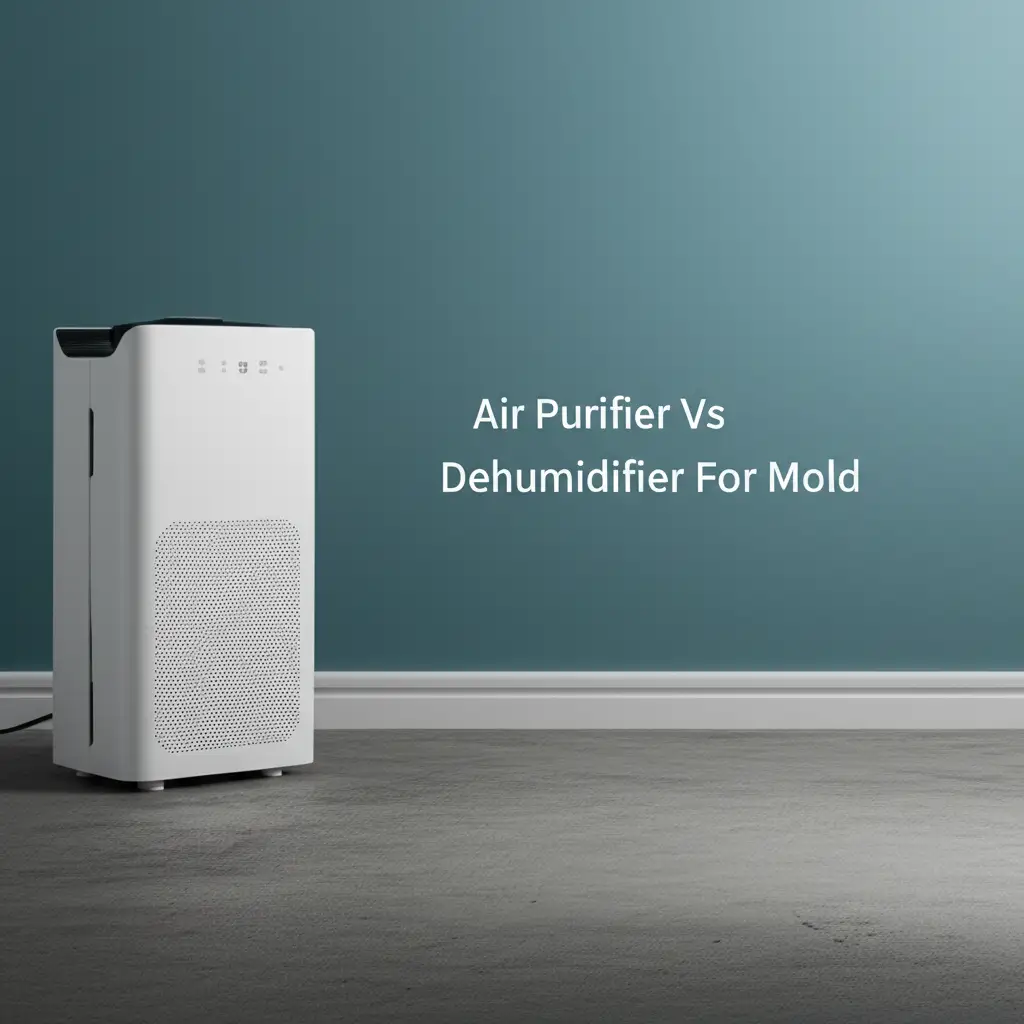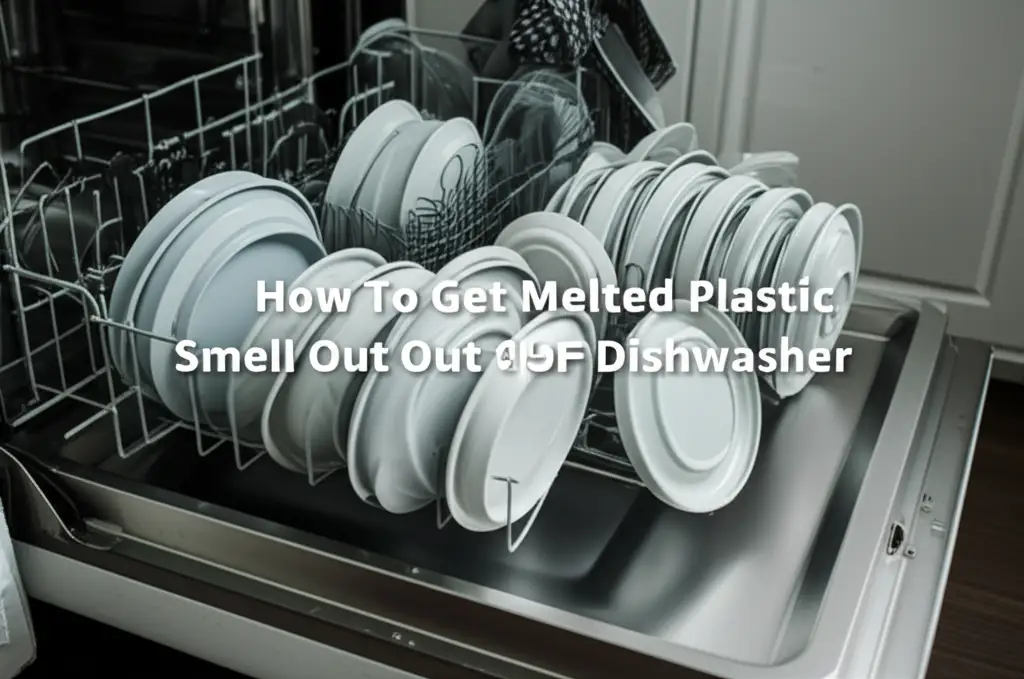· Elira Thomsen · Home Maintenance · 16 min read
How To Clean Sink Trap

Master the Art of Cleaning Your Sink Trap
Have you ever walked into your kitchen or bathroom and noticed a strange, lingering smell? Or maybe your sink drains slowly, leaving water standing for too long. These are common signs that your sink trap needs attention. This little U-shaped or S-shaped pipe under your sink plays a big role in your home’s plumbing.
Knowing how to clean a sink trap is a valuable skill. It helps you prevent bigger problems like severe clogs and unpleasant odors. I will guide you through simple methods to keep your drains flowing freely. We will cover natural cleaning solutions, manual cleaning steps, and important tips for preventing future issues. By the end, you will feel confident tackling this common home maintenance task.
Takeaway
- Regularly cleaning your sink trap prevents clogs and eliminates bad odors.
- You can choose between natural cleaning solutions or manual disassembly based on the clog’s severity.
- Consistent prevention keeps your sink traps clear and your home smelling fresh.
Cleaning a sink trap involves removing the U-shaped or S-shaped pipe under your sink. You then clear out accumulated debris like hair, grease, and food particles. This process improves drainage and eliminates foul odors. Use natural solutions like baking soda and vinegar for light maintenance, or manually clean for tough clogs.
Understanding Your Sink Trap: What It Is and Why It Needs Cleaning
You might think your sink trap is just a bend in the pipe, but it serves a vital purpose. This curved section, often called a P-trap or S-trap, holds a small amount of water. This water creates a seal. The seal prevents sewer gases from entering your home through the drain. Without a functioning trap, your house would smell very bad.
Over time, various things go down your drain. Hair, soap scum, grease, and food particles can collect inside the trap. This buildup narrows the pipe’s opening. Water flow slows down, leading to clogs. The trapped debris also starts to decompose. This decomposition produces foul odors that can fill your kitchen or bathroom. Cleaning your sink trap regularly solves these problems. It ensures good drainage and keeps your home smelling clean. I find it is a simple task that makes a big difference.
The Purpose of a Sink Trap
A sink trap, commonly known as a P-trap or U-trap, has two main jobs. First, it traps a small amount of water. This water barrier blocks sewer gases. These gases are unhealthy and smell terrible. Second, the trap catches heavy debris that goes down the drain. This debris might be hair, food scraps, or small fallen objects.
If the trap did not exist, these items would go straight into your main drain lines. This could cause much larger and more expensive clogs deeper in your plumbing system. The trap keeps these items in an accessible place. You can easily remove them during cleaning. Knowing this helps me appreciate the trap’s design. It truly protects your home from serious plumbing issues.
Common Signs Your Trap Needs Attention
Your sink will tell you when its trap needs cleaning. The most obvious sign is slow drainage. Water stands in the sink longer than it should. It might swirl slowly before finally disappearing. This means something obstructs the flow.
Another clear indicator is a bad smell coming from the drain. This smell often resembles rotten eggs or sewage. It happens because food particles, grease, and other organic matter rot inside the trap. The smell can become quite strong. You might also hear gurgling sounds as water tries to pass through a restricted pipe. Sometimes, you might even see small pieces of debris float back up into the sink. These are all signals it is time to act.
Essential Tools and Safety for Sink Trap Cleaning
Before you start to clean your sink trap, gather the right tools. Having everything ready saves time and makes the job easier. Most of these items are common household tools. You do not need special plumbing skills for a basic trap clean.
Safety is also important. Water and grime can spread. Pipes might contain dirty water. Protecting yourself and your home prevents bigger messes. I always recommend putting on gloves and having a bucket ready. These simple steps make the entire process much smoother and cleaner. Proper preparation ensures you get the job done right the first time.
Gathering Your Supplies
To manually clean a sink trap, you will need a few simple items. First, get a bucket. This bucket will catch water and debris from the trap. A shallow basin also works well. Next, find a pair of rubber gloves. These protect your hands from grime and bacteria.
You will also need a wrench, often called a slip-nut wrench or channel locks. This helps loosen the nuts that hold the trap together. For tougher clogs, a small wire brush or an old toothbrush can help scrub the inside of the pipes. Keep some old rags or paper towels nearby for spills. Having these items ready prevents interruptions during the cleaning process.
Safety First: Precautions to Take
Safety should be your priority when cleaning a sink trap. First, turn off the water supply to the sink. You usually find shut-off valves under the sink. This prevents accidental water flow when you disconnect pipes. Lay down old towels or newspapers under the work area. This protects your cabinet floor from spills.
Wear protective gloves to keep your hands clean and safe from potential bacteria. Be ready for foul odors. The trapped gunk often smells unpleasant. If you have sensitive skin, long sleeves might also be a good idea. Work carefully and avoid rushing. This ensures a clean and safe job.
Natural Cleaning Methods for Light Sink Trap Clogs and Odors
Sometimes, you do not need to take apart your sink trap. Natural cleaning methods can fix minor clogs and unpleasant odors. These methods use common household ingredients. They are safe for your pipes and the environment. This approach is perfect for regular maintenance. It also works well when drains start to slow down but are not fully blocked.
I often use these methods as a first step. They are quick and require minimal effort. They also prevent the buildup from becoming a major blockage later. If your drain is completely stopped, you will need a more direct approach. But for everyday issues, these natural solutions are very effective. They help keep your plumbing clear without harsh chemicals.
The Baking Soda and Vinegar Method
The baking soda and vinegar method is a classic for a reason. It is effective for light clogs and odors. The reaction creates fizzing action that helps loosen grime. First, pour a half cup of baking soda down the drain. Let it sit for a few minutes. This allows the soda to absorb odors and start breaking down grease.
Next, pour one cup of white vinegar down the drain. You will see fizzing immediately. This is the chemical reaction working. Cover the drain if you can to keep the fizzing action inside the pipe. Let this mixture sit for 30 minutes to an hour, or even overnight for tough clogs. Finally, flush the drain with hot water. This washes away loosened debris. Vinegar is also a versatile cleaner for many home tasks. You can learn more about its uses, like where to put vinegar in dishwasher to clean.
Boiling Water Flush
A simple boiling water flush can also work wonders for minor clogs. It is especially good for melting grease and dislodging soap scum. Heat a large pot of water until it reaches a rolling boil. Carefully pour the boiling water directly down the drain. Pour it slowly and steadily. This gives the hot water time to work on the grease.
Be careful not to splash yourself. The extreme heat helps dissolve fats and oils that often cause slow drains. You can repeat this process a few times if the drain still seems slow. This method is quick and requires no special ingredients. It is a good first step if you suspect grease is the main problem. Always avoid pouring boiling water if you have PVC pipes and suspect they are old or damaged, as extreme heat can sometimes harm them.
Manual Disassembly: Deep Cleaning Your Sink Trap
Sometimes, natural methods are not enough. When you have a stubborn clog or a persistent odor, manual cleaning is the best solution. This involves taking apart the sink trap itself. It might sound intimidating, but it is a straightforward process. You will directly remove the accumulated gunk.
I have found that seeing the amount of hair, soap scum, and other debris that comes out can be quite shocking. But it is also satisfying to know you have thoroughly cleaned the source of the problem. This method provides the most complete clean. It ensures your drain runs perfectly again. Just remember to have your tools ready and follow the steps carefully.
Step-by-Step Guide to Removing the P-Trap
Before you start, place a bucket or basin directly under the sink trap. This will catch any water or debris that falls out. Most sink traps are held in place by slip nuts. These are plastic or metal rings that you can loosen. Use your slip-nut wrench or channel locks to turn these nuts counter-clockwise.
There are usually two nuts: one connecting the trap to the tailpiece from the sink and another connecting it to the wall drain pipe. Loosen both nuts. Carefully slide the trap piece downwards and away from the pipes. Be prepared for some water to spill out. The trap will likely contain standing water and a good amount of gunk. Keep the bucket directly underneath.
Cleaning the Trap and Reassembly
Once you remove the sink trap, clear out the debris. Use a small brush or an old toothbrush to scrub the inside of the pipe. You can also use a coat hanger bent into a hook shape to pull out hair and other gunk. Rinse the trap thoroughly with hot water. Make sure all visible grime is gone.
Check the connecting pipes under the sink as well. There might be some debris in the tailpiece or the wall drain. Clean those areas if needed. After cleaning, reassemble the trap. Slide it back into place, aligning the pipes. Hand-tighten the slip nuts first. Then use your wrench to give them a final quarter-turn. Do not overtighten, as this can crack plastic pipes. Turn on the water slowly to check for leaks. If you see a drip, tighten the nuts a little more.
Tackling Stubborn Clogs: Beyond the Basic Trap Clean
What if you clean the sink trap, but the drain still does not flow well? This means the clog is deeper in the drain pipe. These stubborn blockages can be frustrating. They require tools that go beyond the trap itself. You might need a plunger or a drain snake.
These tools can push or pull the blockage out. It is important to know when and how to use them correctly. Using them wrong can sometimes make the problem worse. But when used properly, they are effective for those really tough clogs. I will explain how to approach these deeper issues.
When to Use a Plunger Effectively
A plunger can be a powerful tool for stubborn clogs. For a sink, use a cup-style plunger. Make sure there is enough water in the sink to cover the plunger’s rubber cup. This creates a good seal. Place the plunger firmly over the drain opening. Push down and pull up vigorously several times. Maintain a tight seal.
On the last pull, yank the plunger up quickly to create suction. This suction can dislodge the clog. You might need to repeat this process multiple times. If your sink has an overflow drain, plug it with a wet cloth. This helps maintain the suction force. A plunger works best for clogs that are not too far down the pipe.
Drain Snakes and Their Application
If a plunger fails, a drain snake (also called an auger) is the next step. A drain snake is a long, flexible cable with a corkscrew tip. You feed it into the drainpipe to reach and break up deeper clogs. First, remove the sink trap to access the main drainpipe directly. Insert the snake into the pipe.
Push the snake until you feel resistance. This means you have reached the clog. Turn the handle on the snake to rotate the tip. This action breaks up the clog or allows the tip to grab onto it. Pull the snake back out slowly, bringing the debris with it. Clean the snake as you pull it out. Reassemble the trap and flush the drain with hot water. Using a drain snake requires some patience, but it is effective for most household clogs.
Preventing Future Sink Trap Clogs and Odors
Cleaning a sink trap is effective, but preventing clogs is even better. Regular maintenance stops problems before they start. Small habits can make a huge difference in keeping your drains clear and free of odors. It is much easier to prevent a blockage than to remove one.
I always tell people that what goes down the drain really matters. Think of your drain as a long, narrow path. Certain items will inevitably cause traffic jams. By being mindful, you can keep that path clear. This section will give you practical tips. These tips will help you avoid the hassle of future clogs and unpleasant smells.
Best Practices for Drain Maintenance
Regular small actions can prevent big drain problems. First, use a drain strainer in your sink. These small mesh screens catch food particles, hair, and other debris before they enter the trap. Empty the strainer into the trash after each use. Second, flush your drains regularly with hot water. After doing dishes, let hot water run for a minute or two. This helps move any lingering grease or soap scum through the pipes.
Once a week, you can do a simple baking soda and hot water flush. Pour half a cup of baking soda down the drain, followed by a slow stream of hot water. This helps prevent minor buildups. Consistent small efforts keep your drains healthy. Just like cleaning your dishwasher filter regularly helps it perform, giving attention to your sink trap prevents issues. To learn about other routine cleanings, you can check how often should you clean your dishwasher filter.
What NOT to Pour Down Your Drain
Many common substances can cause severe clogs. Avoid pouring grease, fats, and oils down the sink. They cool and solidify in the pipes, creating sticky blockages. Scrape greasy pans into the trash before washing. Coffee grounds are another big no-no. They do not dissolve in water and clump together, forming stubborn clogs.
Flour, pasta, and rice also expand with water, creating blockages. Hair is a major culprit in bathroom sinks and showers. Use hair catchers in drains to prevent this. Harsh chemicals can damage pipes and harm the environment. They often do not fully remove clogs either. Disposing of these items properly saves you from future headaches and ensures good general hygiene in your home.
When to Call a Professional Plumber
Most sink trap clogs are manageable for homeowners. But sometimes, a problem is beyond DIY repair. It is important to recognize when to call a professional. Ignoring signs of a serious issue can lead to costly damage. Plumbers have specialized tools and experience. They can diagnose complex problems quickly.
I learned that knowing your limits is key. Trying to force a solution on a deep-seated problem can make things worse. This includes damaging pipes or pushing clogs further down the system. When in doubt, call an expert. They can save you time, money, and frustration in the long run.
Signs You Need Professional Help
Several signs indicate it is time to call a plumber. If you have tried all the DIY methods—natural solutions, manual cleaning, plunging, and snaking—and the clog persists, it is a sign. Recurring clogs in the same sink also suggest a deeper problem. This could be an issue with the main drain line, not just the trap.
Another red flag is when multiple drains in your home are slow or clogged. This points to a blockage in the main sewer line. Foul odors that do not go away after cleaning the trap could mean a broken vent pipe or a more serious sewer issue. Water backing up into other fixtures is a critical sign. Any major pipe damage or a severe leak also requires a professional. These situations need expert attention.
FAQ Section
How often should I clean my sink trap?
You should clean your sink trap at least once every three to six months for maintenance. If you notice slow drainage or bad odors, clean it sooner. Regular checks prevent small buildups from becoming major clogs. A quick flush with hot water after each use helps too. This keeps your drain clear.
Can I use chemical drain cleaners?
I advise against using chemical drain cleaners frequently. They contain harsh chemicals that can damage your pipes over time. These chemicals can also harm the environment. They often provide only a temporary fix. Natural methods like baking soda and vinegar are safer and effective for many clogs.
What causes sink trap odors?
Sink trap odors usually come from accumulated organic matter. This includes food particles, grease, soap scum, and hair. As these materials decompose, they release foul-smelling gases. The water seal in the trap stops sewer gases. So, the smell is often from the trap itself, not the sewer line.
Is a P-trap different from a U-trap?
A P-trap and a U-trap refer to the same type of plumbing fixture. Both are curved sections of pipe designed to hold water. This water creates a seal against sewer gases. The “P” shape describes how the trap curves vertically then horizontally to connect to a wall drain. The “U” shape describes the curve itself.
Can I clean my garbage disposal and sink trap at the same time?
Yes, you can clean your garbage disposal and sink trap together. Cleaning the disposal first is often helpful. Run citrus peels or ice cubes through it. Then, address the trap. Many disposal clogs happen in the trap area. A clean disposal and trap work together for better drainage.
What are common items found in a clogged sink trap?
Common items found in a clogged sink trap include hair, soap scum, and grease. Food particles like coffee grounds, rice, and pasta are also frequent culprits. Small objects accidentally dropped down the drain can get stuck. These materials combine to form stubborn blockages.
Conclusion
A clean sink trap ensures your drains work well and your home smells fresh. We have explored simple ways to handle this common household task. You can use natural methods like baking soda and vinegar for light clogs. For tougher blockages, manual disassembly of the P-trap is effective. Remember to prepare your tools and follow safety steps.
Preventative measures are your best defense against future issues. Use drain strainers and avoid pouring grease or coffee grounds down the sink. Regular hot water flushes also help. Knowing how to clean your sink trap means you can handle minor plumbing issues yourself. This saves you money and keeps your home running smoothly. Take action today for clear, odor-free drains.





